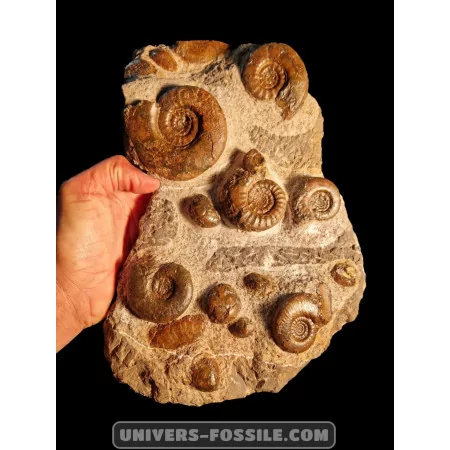Ammonites and Bivalves Plate - Unique Fossil Decor for Fossil Enthusiasts

Ammonites and Bivalves Plate: A Stunning Fossil Display
Prepare to be mesmerized by the ancient charm of the Ammonites and Bivalves Plate. This exquisite collection showcases the timeless beauty of ammonites, captivating fossils that have fascinated researchers and enthusiasts for centuries. Immerse yourself in the intriguing world of these extinct marine creatures.
Ammonites: Fascinating Fossil Wonders
Ammonites are captivating fossils that have intrigued researchers and paleontology enthusiasts for centuries. These extinct marine creatures belong to the class of cephalopod mollusks and thrived in the oceans worldwide for millions of years. They were agile predators equipped with characteristic spiral shells.
Features of Ammonites
Ammonites had external shells composed of mother-of-pearl, similar to those of modern squids and octopuses. Their shell, often richly ornamented, helped protect them from predators and regulate their buoyancy in the water. A distinctive feature of ammonites is their suture, the intricate suture line marking the junction of chambers in their shell.
Splendid Details
These fascinating fossils come with a rich history and have played a significant role in many cultures throughout history. Explore the detailed intricacies of ammonites and appreciate their unique characteristics. Learn about their importance in scientific research and the reconstruction of Earth's geological past.
Discover the allure of the Ammonites and Bivalves Plate today and add a touch of prehistoric elegance to your collection.
Ammonites and Bivalves Plate
Ammonites have often been interpreted as protective talismans or symbols of luck. The earliest known references to ammonites date back to antiquity. The Greeks and Romans often regarded them as relics of the gods, while civilizations in the Middle Ages sometimes interpreted them as horns of dragons or petrified serpents.
Diversity of Ammonites
Ammonites thrived for over 300 million years, and over time, they evolved to inhabit a wide diversity of marine environments. Their shell shapes, sizes, and patterns varied considerably, allowing paleontologists to recognize thousands of different species. From elaborate, giant sea creatures to more modest and understated specimens, ammonites were among the most diverse creatures in the history of life on Earth.
Conclusion
In conclusion, ammonites represent fascinating examples of the richness of prehistoric marine life. Their beauty, diversity, and stratigraphic importance make them valuable subjects of study for scientists and sought-after treasures for fossil collectors worldwide.
